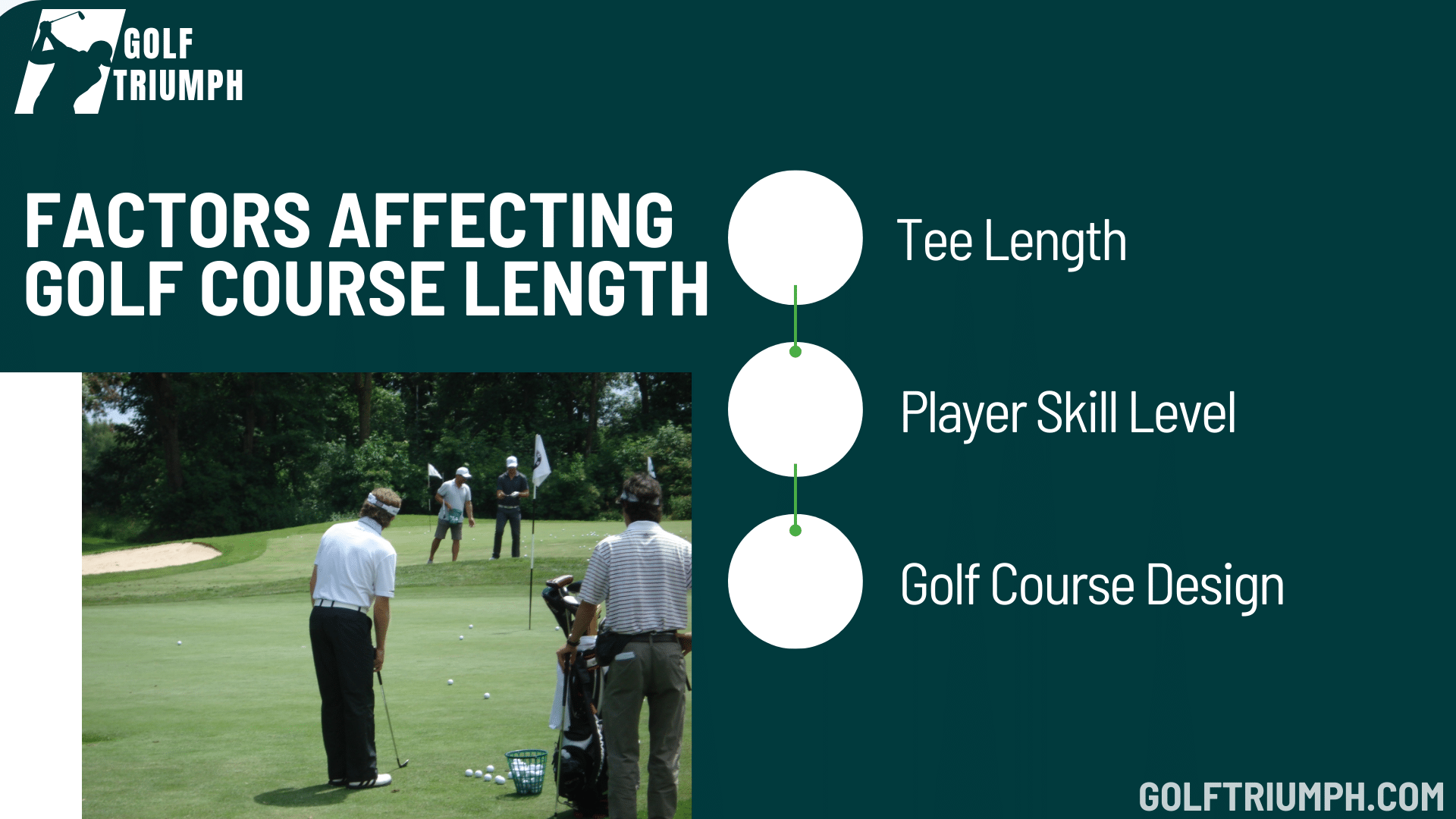
Ever wondered what makes a golf course truly challenging? Sure, the scenic beauty and tricky hazards play their part, but have you ever stopped to think about the length of the course? It’s not just about how far you can drive the ball – course length can make or break your game. Each hole demands different skills, and depending on the overall distance, your club selection, approach, and stamina can vary greatly. Whether you’re a weekend warrior or a seasoned pro, understanding the average length of a golf course is key to sharpening your strategy and improving your score. Longer courses tend to test your driving accuracy and power, while shorter ones might emphasize your short game and finesse. The layout and total yardage influence how you navigate the fairways, deal with hazards, and approach the greens. So, what is the average length golf course? Let’s dive in and explore how course length can affect your play, and how you can adjust your tactics to take full advantage of the layout!
Understanding the Length of a Golf Course
When discussing the length of an average golf course, it typically refers to the total distance from the tee to the hole, covering all 18 holes. On an 18-hole course, which is the standard layout for most modern courses, the average course can vary in length depending on whether it is designed for amateurs, professionals, or tour events.
For recreational players, the average golf course length is typically between 6,000 and 6,500 yards. However, this can stretch to around 7,200 yards for courses designed for tour players or professional events like the PGA Tour. Factors such as the number of par-3, par-4, and par-5 holes also contribute to the overall golf course length average.
If you’re short on time or simply looking for a more relaxed round, you might want to consider the benefits of playing 9 holes of golf. Opting for just half a round can still provide plenty of fun while being a more time-efficient option for many golfers
How Many Miles Is an Average Golf Course?

In terms of miles, you may wonder, how many miles is an average golf course? On average, a golf course for amateurs stretches between 5.7 miles to 7.8 miles when walked, including the distance between holes, tee boxes, and greens. This calculation considers the entire length of the course from tee to hole, along with the space between them.
For example, an average recreational golfer, playing a course of about 6,200 yards, walks around 5.7 miles during the round. For longer, more professional-level courses, the total distance walked can approach 7.8 miles on a standard 18-hole course.
Types of Courses and Their Impact on Course Length
There are different types of courses, and each has a distinct impact on the golf course length average. The most common types are:
Championship Courses: These are the longest courses, often used in professional tournaments. They can range from 7,000 to 7,500 yards and sometimes longer. Courses on the PGA Tour, for instance, are designed to challenge tour players with their length, often exceeding 7.8 miles in total walking distance.
Executive Courses: These courses are shorter and typically designed for a faster round of playing golf. Their yardage can range from 4,000 to 5,000 yards, making them ideal for casual or beginner golfers.
Par-3 Courses: These are the shortest type of courses, with all holes being par-3s. They are typically under 3,000 yards in total, offering a quicker, less physically demanding round.
Factors Affecting Golf Course Length

Several factors influence the course yardages and the overall average golf course length. These include:
Tee Length: Courses are divided into various tee boxes, and each has a different tee length. From the back tees, where professionals or more skilled players start, the course will be at its longest, often exceeding 7,000 yards. For recreational or male golfers, the tee boxes can range between 6,000 and 6,500 yards, while forward tees, typically for beginners or seniors, are shorter.
Player Skill Level: Professional players like those on the PGA Tour have a higher average hitting distance compared to amateurs. For instance, many professionals have an average driving distance of over 300 yards, while amateurs typically average between 200 to 250 yards. This leads to courses for professionals being significantly longer.
Golf Course Design: Designers factor in the natural terrain, water hazards, bunkers, and green placements, which can extend or shorten the course. Challenging holes may increase the overall golf course length average as players have to navigate around obstacles.
Impact of Course Length on the Game
The average length golf course can greatly affect how golfers play. For example, longer courses require players to focus on their hitting distances, as reaching greens in regulation becomes more difficult. Tour players, with their powerful drives often exceeding 300 yards, will fare better on longer courses, while recreational players may struggle and rely more on shorter, more accurate shots.
Another impact is on the physical demands of the game. The distance walked during a round of golf can vary significantly based on the golf course length. An amateur golfer playing a course around 6,000 yards will walk an estimated 5.7 miles, while a professional player on a longer course may cover 7.8 miles. This difference can be taxing, especially for players not used to walking such long distances.
The Importance of Course Yardage
Understanding course yardages is critical for players of all levels. From selecting the right club for each shot to determining the strategy for a hole, knowing the distance can impact performance. For recreational players, choosing the correct golf balls and clubs can help in managing longer holes. While tour players often focus on optimizing their shots to match the course yardages.
For professional tournaments like the PGA Tour, course length is often meticulously calculated to ensure that players are tested to the fullest. In contrast, for casual players, shorter courses or those with varied tee length options make the game more enjoyable and accessible.
Conclusion
The average length golf course offers a variety of experiences depending on the type of course. Player skill level, and specific design. The typical golf course for recreational players ranges between 5.7 miles and 7.8 miles. While professional courses can be longer, testing the skills of elite tour players.
Whether you’re a recreational golfer walking a shorter course or a professional navigating a lengthy tournament layout. Understanding the average golf course length can help improve your game and strategy. So, the next time you’re out playing golf, take note of the course yardages and see how the average golf course length affects your round!





